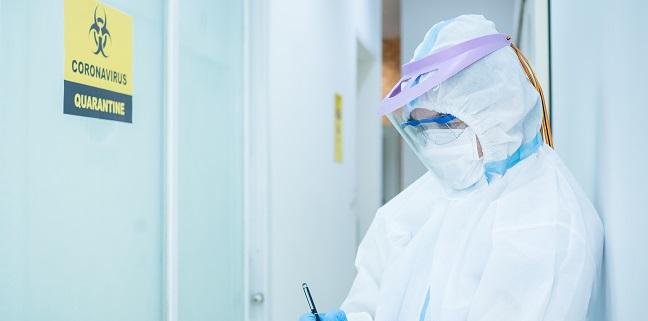Mobile Monitors Can ID Arrhythmias Due to COVID-19 Drugs
When telemetry beds are scarce, these monitors rapidly detect issues and also minimize contact with infectious patients.

When one New York hospital ran out of telemetry beds during the COVID-19 surge, it turned to mobile monitors to keep an eye out for potential heart rhythm complications associated with hydroxychloroquine and/or azithromycin. The two drugs have been widely adopted as treatments for SARS-CoV-2 infection based on hints of benefit in preliminary studies, although more recent analyses have suggested potential harms.
In addition to allowing for the rapid detection of arrhythmogenic risks, use of the mobile monitors—which have typically been used in the outpatient setting—can improve safety for healthcare workers and conserve resources during a situation like the COVID-19 crisis, lead author David Chang, MD (North Shore University Hospital, Manhasset, NY), told TCTMD.
“These ambulatory monitoring systems are viable options, not only for the current pandemic but other unique circumstances moving forward where we might be short on telemetry monitors or beds that are available in the hospital,” Chang said. By eliminating the need for staff to enter the patient’s room to perform periodic ECGs, he added, “it’s also a safety measure moving forward for technicians and better utilization of protective equipment.”
The preliminary experience with the portable monitors—specifically the Mobile Cardiac Outpatient Telemetry (MCOT) systems (BioTelemetry)—was published online as a research letter in the Journal of the American College of Cardiology.
Chang said that when the telemetry beds at his center were filled with COVID-19 patients, “we were forced to be a little creative and find ways to have our eyes on all the patients being treated with these medications.” Patients receiving hydroxychloroquine and azithromycin, which have known arrhythmia risks, would typically be monitored with twice-daily ECGs, and the challenge was to maintain that level of attention in patients who were not on the telemetry floor. Use of the mobile monitors “was, in our opinion, the best solution to that problem,” he said.
We were forced to be a little creative and find ways to have our eyes on all the patients being treated with these medications. David Chang
Chang and his colleagues looked at how it went for the 117 patients (mean age 60.2 years; 40.5% women) on nontelemetry floors who were fitted with the mobile monitors, which include a sensor and network that communicates via Bluetooth, in the first week. An electrophysiologist received any “urgent alerts” that were triggered by a corrected QT > 500 ms and any arrhythmias within 3 to 5 minutes.
All of these patients were treated with hydroxychloroquine 400 mg twice daily for the first day and then 200 mg twice daily for 4 days; 43.6% of patients also received at least one dose of IV azithromycin 500 mg. About one-third were given at least one other QT-prolonging medication.
During a total of 295 patient-days, there were 28 urgent alerts in 18 patients (15.4%); 16 required management changes. Most of the alerts (53.6%) were for A-fib with a rapid ventricular response. Another five alerts (17.9%) were for a corrected QT > 500 ms.
“With our approach, our technicians did not have to go to the rooms to see these patients and have that interaction, meaning the exposure risks were much lower,” Chang said. “Also, by doing so, we saved a lot of protective equipment, meaning they didn’t have to put on the masks, gowns, and such.”
Although preliminary data have led to widespread use of hydroxychloroquine and azithromycin for the treatment of COVID-19, more recent analyses have been more negative, leading the US Food and Drug Administration to issue a safety communication about hydroxychloroquine (and chloroquine) last week stemming from the risk of heart rhythm disturbances.
Chang said this paper was focused on the implementation of the mobile monitoring approach, adding that his team has another paper coming out soon that will touch on the safety and efficacy of these medications.

Todd Neale is the Associate News Editor for TCTMD and a Senior Medical Journalist. He got his start in journalism at …
Read Full BioSources
Chang D, Saleh M, Gabriels J, et al. Inpatient use of ambulatory telemetry monitors for COVID-19 patients treated with hydroxychloroquine and/or azithromycin. J Am Coll Cardiol. 2020;Epub ahead of print.
Disclosures
- Chang reports no relevant conflicts of interest.


Comments